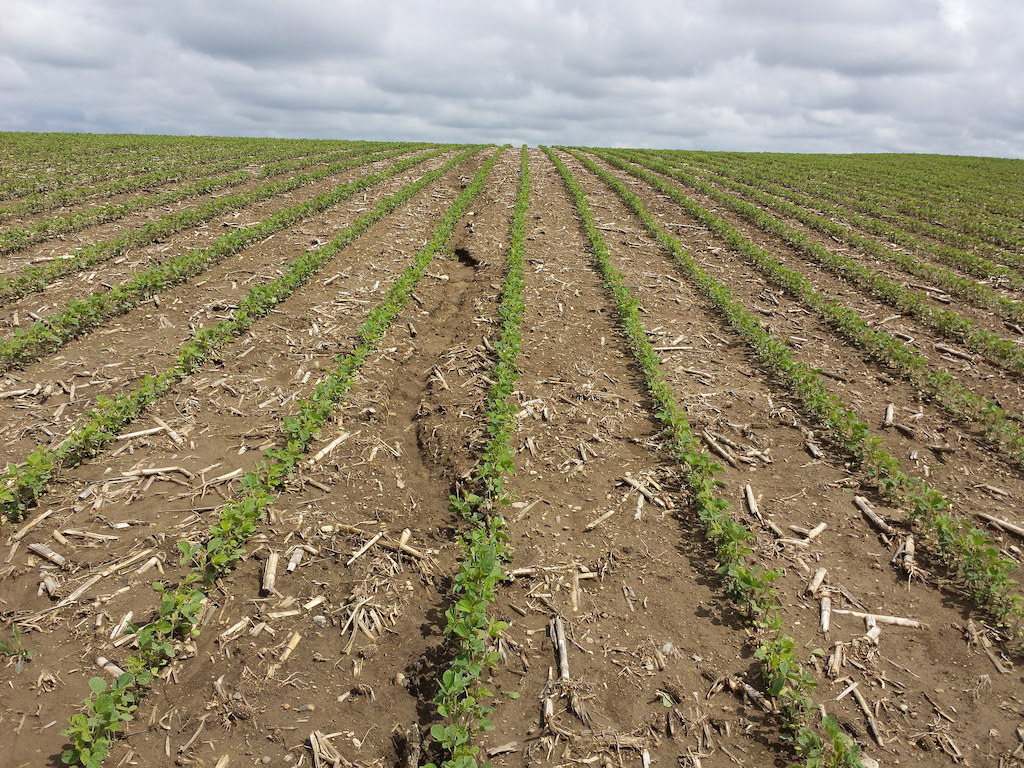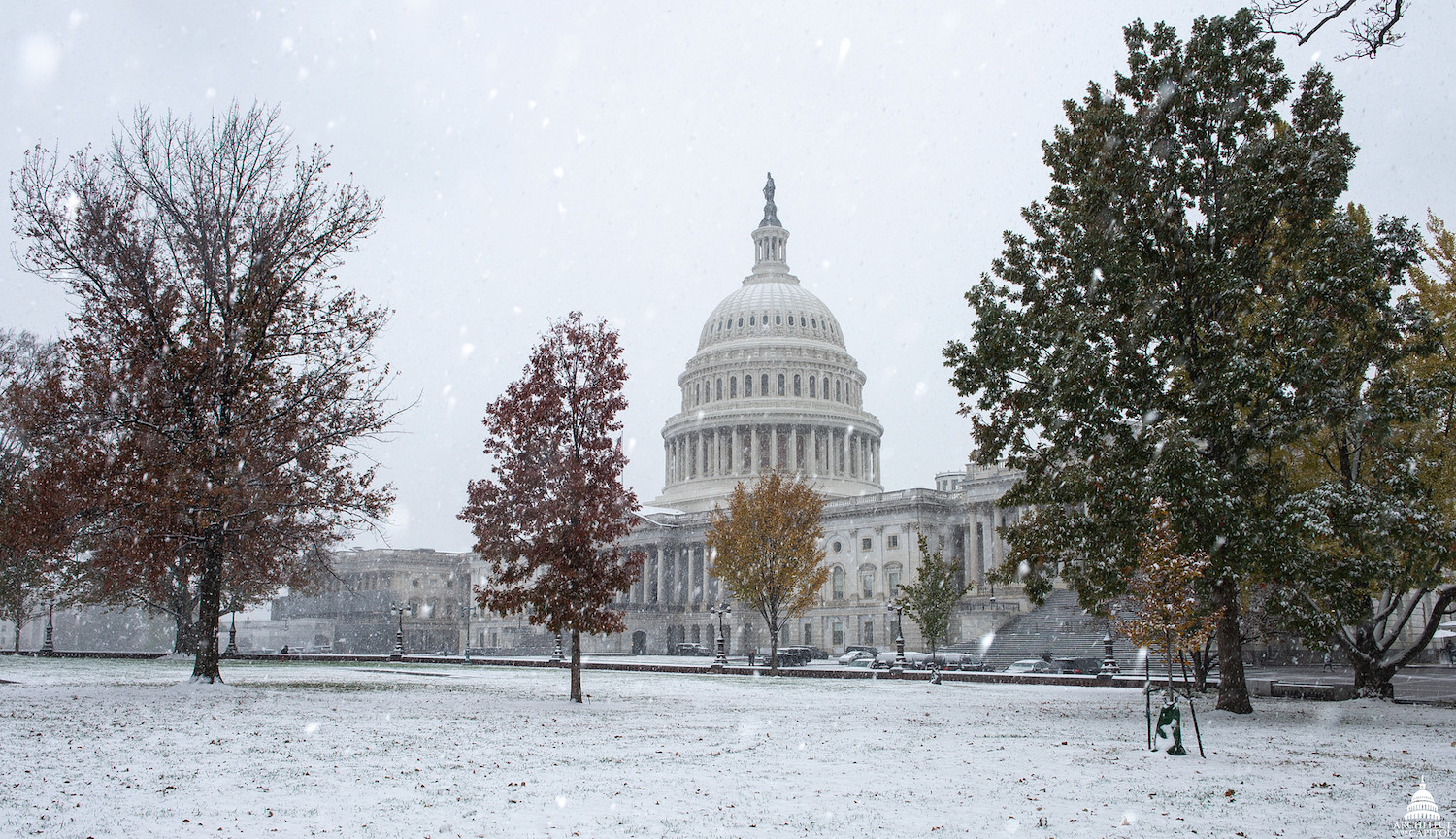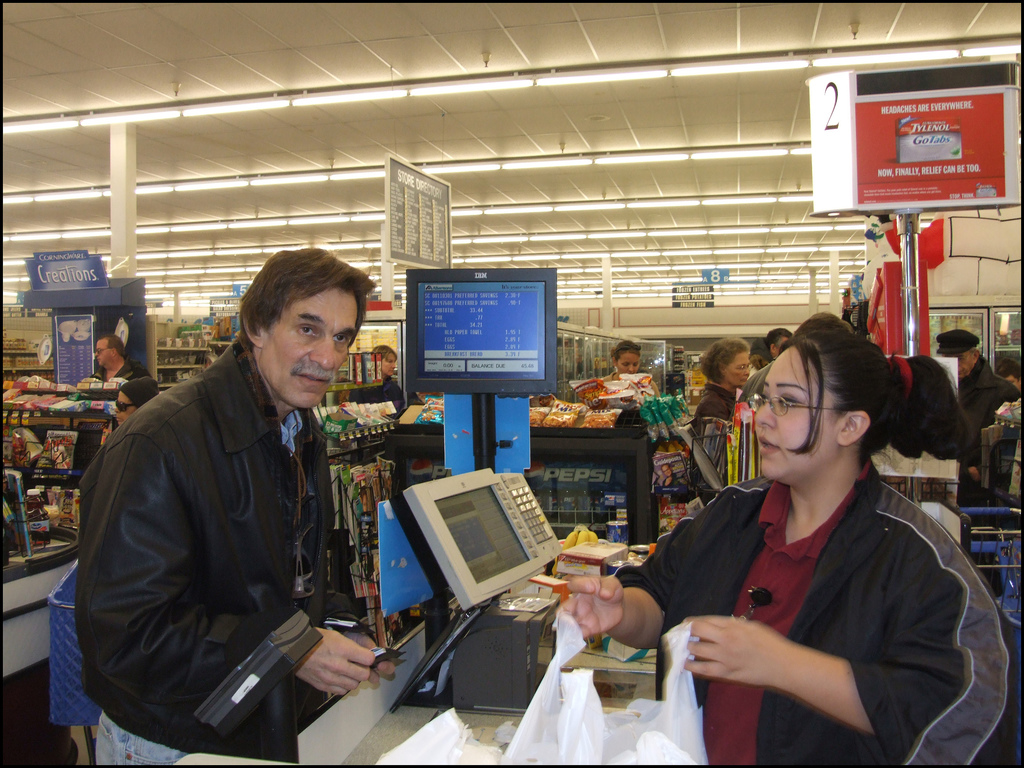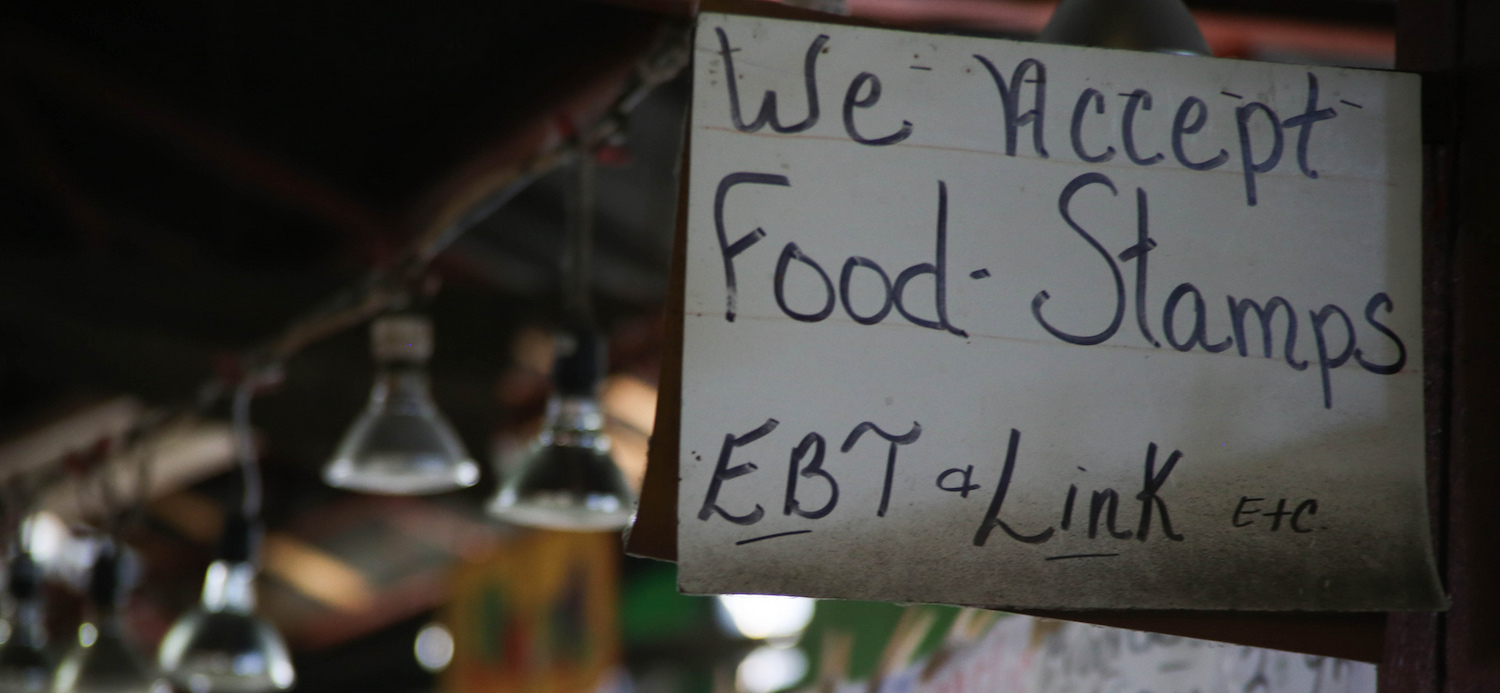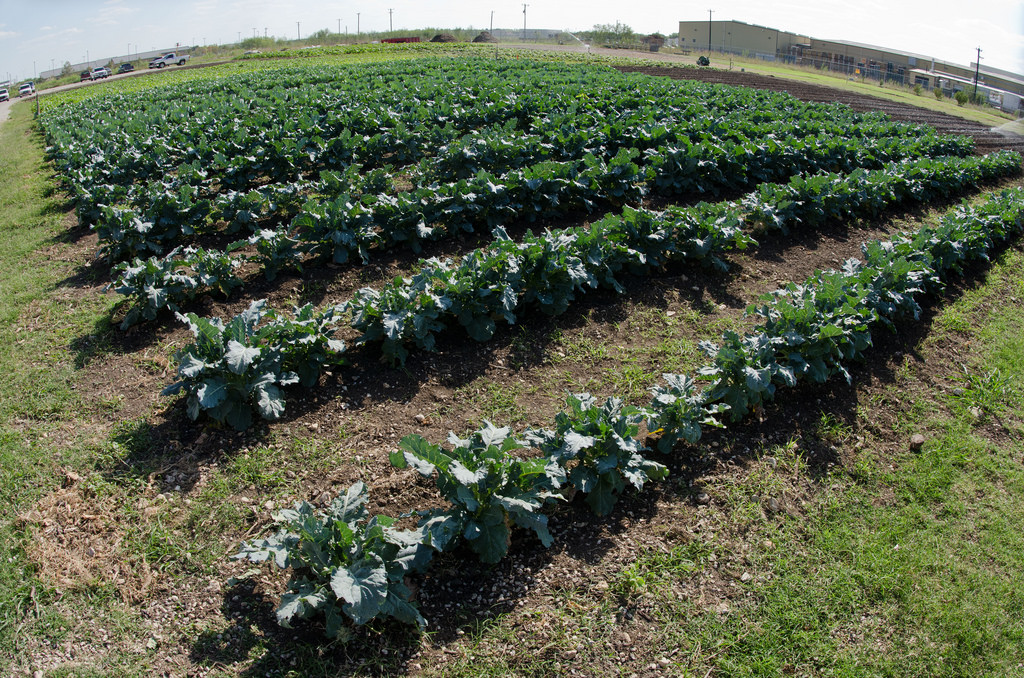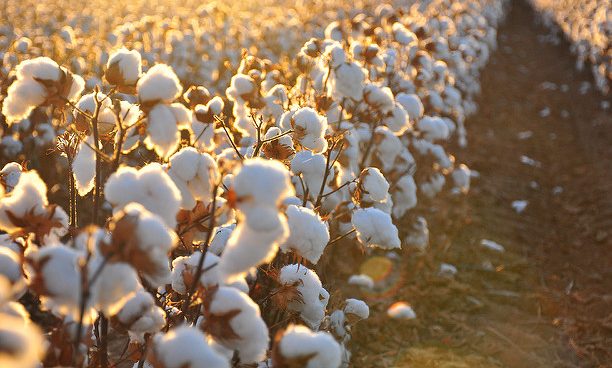
As Trump’s cabinet nominations roll in, there’s still no word on who’ll replace Secretary of Agriculture Tom Vilsack. But regardless of who fills his seat, the farm bill is due for an update in 2018. Renegotiated about once every five years, this bill is the funding engine that runs pretty much every major agriculture and nutrition program in the country. And advocates are clinging to its potential as the one big federal law that can still drive us toward a more sustainable food system in the next administration.
The farm bill authorizes spending for the big USDA programs we hear about all the time: SNAP (food stamps), commodity programs, crop insurance, and conservation. And within those broad categories, there are a million other, smaller programs that you’ve no doubt heard of. Think grants for farmers’ markets, senior citizen nutrition initiatives, and at least four different programs designed just to support farmers transitioning to organic farming. All told, the last farm bill authorized almost a trillion dollars over ten years in government spending. For farmers and nutrition advocacy groups alike, it’s the defining piece of federal legislation.
But the 2014 Farm Bill was two years late—something former U.S. Deputy Secretary of Agriculture (and rumored potential pick for Secretary of Agriculture under Trump) Chuck Conner says we can’t afford to repeat.
Cotton producers are among the voices clamoring for reform in the 2018 Farm Bill
Negotiations are likely to begin in earnest in early 2017, but advocates on both sides of the aisle have already begun preparing. Late last month, the Farm Foundation Forum held a panel to talk about setting priorities for the next bill, which was more preliminary conversation about wishes and grievances than a substantial predictive analysis. But the speakers did identify some of the key points of contention for the 2018 legislation. Panelists included Chuck Conner, currently president and CEO of the National Council of Farmer Cooperatives; Scott Faber, vice president of government affairs at Environmental Working Group (EWG); and Darren Bakst, agricultural research policy fellow at the Heritage Foundation.
The main takeaways: the farm bill isn’t likely to be split in half this time around (meaning nutrition programs and farming programs will continue to fall under one piece of legislation—something Republicans campaigned against this election cycle), and no one is happy with the state of the safety net (that’s the set of farm support programs that includes insurance and commodity payments and is sometimes referred to as “subsidies”). Clean water remains a point of contention even though it isn’t really part of the farm bill, and budget constraints may be a defining factor this time around.
Splitting the difference. Since 1973, nutrition and farming programs have been packaged together and legislated in one bill as part of a congressional effort to satisfy both rural and urban interests. Nutrition programs take the lion’s share of funding, but the bill also provides support farmers rely on. The New York Times outlined the fractious history this way:
“In the early 1970s, as rural members of Congress saw their numbers start to decline, a deal was struck to include food stamps in the farm bill so lawmakers would be able to muster enough votes to pass it.”
That worked fine for a while, but the 2014 Farm Bill negotiations saw a shift in congressional sentiment. Republicans tried to split the bill in 2013, and the effort got as far as passing the House of Representatives without funding for nutrition programs. The Senate passed a separate version that did include food assistance, and a final version of the bill that both preserved nutrition programs and also cut funding by about $8 billion was eventually signed into law.
Arguments about the split continue. Proponents of a unified farm bill argue that dividing it in a Republican-controlled Congress would mean the SNAP (food stamps) program would be gutted. Meanwhile, opponents of the single bill model argue that a divorce would save money and encourage innovation.
Predictably, the forum panelists were also divided in their opinions on the split. Bakst referred to the farm bill as the “food stamp bill” and supported a change, adding that dividing it in two would spark reform of both agriculture and nutrition programs. But Conner rejected that idea, adding that the agricultural industry as a whole would not support cutting ties with nutrition advocates. And Faber added a little color commentary: “It’s more likely that I’ll be the next Secretary of Agriculture than we’ll split the next farm bill.”
This is likely to remain a dividing line through the next round of legislation. The Republican platform this election season again called for a split in the 2018 Farm Bill, while the Trump campaign said before the election that the president-elect was not interested in separating nutrition programs from farming programs.
 Congressional Research Service
Congressional Research Service Total farm bill spending has more than doubled over the last twenty years
The safety net. Commodity subsidies have been villainized in popular media at least since Michael Pollan took them on in The Omnivore’s Dilemma and the Peabody-winning documentary King Corn followed two friends as they moved to Iowa and chronicled the effect of subsidies on the state’s farms and farmers. Crop insurance has recently come under similar scrutiny: we wrote about how the existing insurance infrastructure failed small-scale farms during the big Northeast peach freeze of 2016. And Washington Post columnist Tamar Haspel has long been an advocate of crop-neutral insurance. Last week, Food and Environment Reporting Network (FERN) published a story about how a farmer’s attempts to introduce environmentally-friendly practices put him at odds with his insurance company.
Though Bakst referred to the safety net as “federal meddling” and opposed it for reasons that diverge from Pollan’s, his conclusion was actually quite similar: Subsidies are out of hand, and they have a disproportionate influence on what’s grown on U.S. farms. He added that they insulate farmers from market forces, and—here’s where nutrition advocates would disagree—subsidizing “healthy crops” (presumably meaning crops other than those that typically get blamed for our country’s health woes: corn, wheat, and soybeans) wouldn’t work either.
When asked what, if anything, advocacy groups could collaborate on in the 2018 Farm Bill, Bakst mentioned the safety net again, saying he agreed with Faber that it’s gotten out of hand. But he stopped shy of calling for a rollback of disaster relief programs.
Faber was quick to reiterate that he doesn’t support eliminating the safety net entirely. He added that all farmers rely on crop insurance, and that it should be accessible to small farmers as well as the big guys. From his perspective, though, reform has already begun. “The transition from the old Commodity Title [the section of the farm bill that provides funding for commodities] to crop insurance as a risk management tool has been progress in the right direction.“ Conner agreed: “I consider it reform that we have graduated more from the direct payment-type subsidy programs to more insurance-based programs.”
But in the big confusing world of the safety net, crop insurance reform is just the beginning. “The challenge is whether or not to provide a basic revenue protection tool or to provide policies that are, essentially, in the world of ag economists, a Cadillac,” Faber said. “It’s not a question of whether or not we have a farm safety net or whether or not we rely on insurance. The real question is: Are we providing too much premium support? To the wrong people? Paying twice for the same losses?”
We left the panel without much clarity on what changes might really be made to the safety net in the 2018 Farm Bill. So we asked Greg Fogel, senior policy advisor at the National Sustainable Agriculture Coalition, for some more concrete insight. He told us to watch for loud voices from cotton and milk producers—both industries have been dissatisfied with current policy. Beyond that, much remains in the air. “There’s a lot of money right now in the Commodity Title due to low prices, so it will be interesting to see how that gets moved around. I think the key on crop insurance will be to ensure that the program is fiscally sound, that it is helping the folks that really need it, and that it is rewarding good conservation as a risk mitigation strategy.”
The EPA’s Waters of the United States was a flashpoint during the election. It has little to do with the farm bill
Clean water. Let’s be clear: the controversial Waters of the United States (WOTUS) rule, which is opposed by farm groups and which became shorthand for federal government overreach this election cycle, is not actually a part of the farm bill. It’s not even administered by the same agency—WOTUS is EPA, the farm bill is USDA. But the conservation part of the farm bill can incentivize wetland protection, so the two are tangentially related. And WOTUS came up during the panel as a point of contention, so here’s the breakdown:
WOTUS actually exempts most agricultural activities. According to NSAC, “EPA has repeatedly stated that the proposed rule retains existing exemptions for agriculture, and would reduce the overall extent of EPA’s jurisdiction.” So yes, it’s been a flashpoint, but the final ruling doesn’t actually change much for existing agricultural activities.
Darren Bakst disagreed with NSAC’s assessment, attacking WOTUS by saying that it’s subjective, hard to enforce, and should be rescinded. He acknowledged that it largely exempts farms, but nonetheless insisted that states and local communities should be taking the lead on water regulation. He sees WOTUS as EPA overreach.
When an audience member asked if the free market has really delivered clean water, no one was willing to answer in the affirmative: Bakst blamed water pollution on subsidies, claiming that they encourage farmers to plant on lands they normally wouldn’t (what?), while Faber emphasized the need to incentivize clean drinking water.
What do sustainable ag advocates have to look forward to? We published a piece last week about how food system reform advocates are refocusing their efforts at the local level, particularly in California. Hillary Clinton’s platform included specific plans for supporting young farmers and increasing conservation spending, but we have very little specific information from the Trump transition team on potential ag policies. Some of our readers pointed out on social media that relocalization seems like an implicit concession on the part of food system reform advocates. So we put it bluntly to Fogel at NSAC: What’ll farm bill negotiations really look like? And are opportunities for advancing the interests of sustainability advocates really all that limited?
“Some of the big topics are likely to be beginning farmers and ranchers, subsidy reform, promoting soil health and farmer-led conservation, rural economic development with a focus on food systems, and ag research,” he said in an email. “Under regular order, I think the opportunities for advancing sustainable agriculture policy proposals are significant heading into the next farm bill.”
Support for beginning farmers and ranchers is certainly something Republicans and Democrats can agree on: With a well-documented aging farmer population, it’s more important than ever to support people trying to break into the industry.

Many dairy farmers remain unhappy with changes made to the Commodity Title in the 2014 Farm Bill
But in the end, it may be all about the money. Fogel cautioned that the situation changes dramatically if we’re talking about writing the farm bill under budget reconciliation. That would mean the bill is written under mandatory spending limits—which would also likely mean large cuts across the board. “Under that scenario, we’d be playing defense to protect the gains we’ve made in recent farm bills. We’ll do everything we can to avoid that outcome.”
Even if it doesn’t come down to mass cuts, the market will play a major role in the shaping of the next farm bill. In an interview with The Progressive Farmer this week, Conner pointed out that farm policy is shaped by the economic climate, and farm incomes right now are below the ten-year average. “If you can tell me where prices are, and more importantly, where they are trending around the time Congress begins the farm bill debate, then I can usually give you some direction where they are going to go with the farm bill,” he told the publication. “Short-term prices have a big impact on long-term farm policy.”
Conner echoes Fogel’s concern that the 2018 legislation may be underfunded. He put it succinctly to The Progressive Farmer: “We’re not expecting to have enormous resources in the next farm bill.”
Additional reporting by Courtney Weber, Grassroots Fellow at the National Sustainable Agriculture Coalition.



